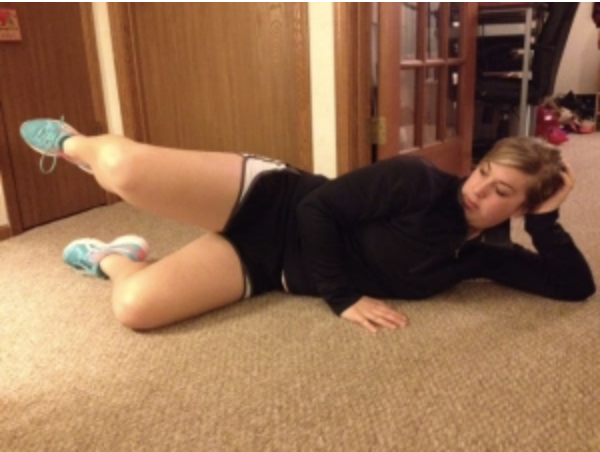How to Stop Running Injuries - Part 3 of 3
Today's post is the last post of a 3 part series that has talked about running injuries and how to stop running injuries. We covered the anatomy of running injuries, risk factors, and easy ways to help resolve running injuries in Part 1 and Part 2. Today we are covering long-term solutions to avoid running injuries and help prevent them from returning. It always gets me a little excited to talk about injury prevention because I wish more athletes did proper sport-specific exercises to avoid injuries!
The main running injuries that I've talked about have been knee pain, aka patellofemoral pain, plantar fasciitis, shin splints, and iliotibial band syndrome. Oftentimes, different running injuries can have the same root cause and risk factors. Due to this, there is some overlap in exercises for injury prevention, so you might see some repeats below!
Knee pain (patellofemoral pain): This is the most common injury that runners experience (myself included!) and typically is due to muscle weakness and poor patellar tracking. Shortening your stride while running can decrease the loads placed on the knee joint, ultimately leading to no pain. To address the deeper issue, it's important to strengthen the glutes to control the knee position. Try this exercise: Lie on your side with hips stacked on each other and knees bent. Lift the top knee up in the air but keep your feet together. Repeat x 15. Then lift the entire top leg up in the air for 15 reps. Then, start with the top leg in the air and rotate the foot up without moving the thigh. Do 15 reps like this, then repeat on the other side.
Plantar fasciitis and shin splints: With these two running injuries, proper training programs and correct shoe fit, make a big impact for preventing these injuries. The easiest way to prevent these from happening, and from returning, is to increase mileage gradually. It's also important to perform adequate calf stretching and/or foam rolling to maintain mobility which will also decrease your risk for re-injury. Check out how to foam roll your calves:
Iliotibial band syndrome: Lastly, the IT Band syndrome frequently occurs in conjunction with knee pain, and that's partly because tightness in the IT Band will create improper patellar tracking, therefore creating knee pain. Similar to preventing knee pain, you can prevent IT Band syndrome by strengthening the glutes to promote better alignment. The clamshell progression exercise shown above is a great starting point. As these get easier, I often have runners progress to single-leg squats while focusing on the knee and hip alignment. Foam rolling is also a great method to help decrease friction at the knee. To foam roll, lie on your side with the outside of your thigh resting on the foam roller. With the leg straight, roll up and down along the thigh length. Focus more on areas that create more discomfort or areas where you experience pain.
Another great tool for runners to prevent running injuries and resolve running injuries is to have a slow-motion running analysis done by a qualified professional. Most running stores offer a "gait assessment," but they focus primarily on the feet to help you find the best shoe. At Revitalize Physical Therapy, we look at the entire body and how each part is connected with one another. Sometimes issues at the foot stem from the hip (for example), which is why I emphasize the importance of this tool. It then allows us to have a more personalized plan for your needs.
If you are in the Milwaukee area, contact us to learn more about our slow-motion running analysis and sport-specific programs. We are happy to talk, no obligation! Happy running folks!





